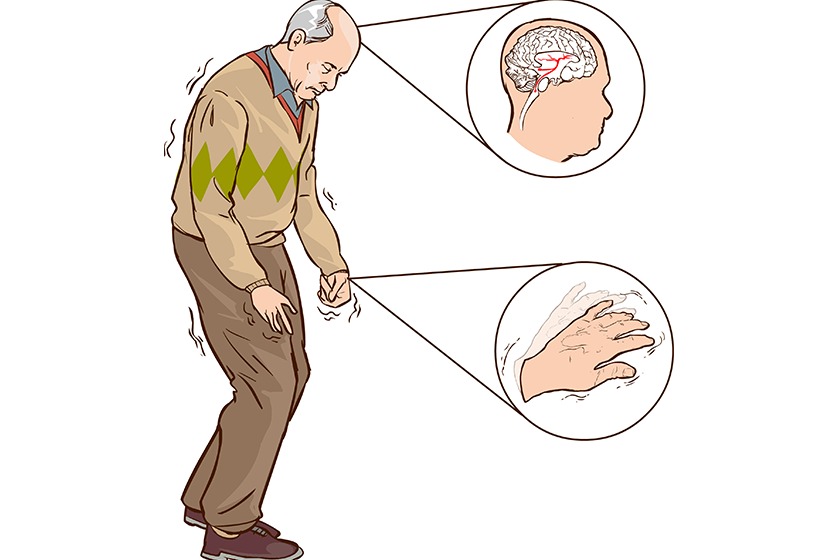Cogwheeling in Parkinson’s disease is a motor symptom that affects muscle movement and control, often described as a ratchet-like or jerky sensation in the limbs or joints. This distinct symptom occurs when there is a resistance to movement in the muscles, typically felt during physical examinations or daily activities. For individuals living with Parkinson’s disease, understanding cogwheeling can help them better manage the condition and recognizing its early signs can assist in more effective treatment planning.
Understanding Cogwheeling
Cogwheeling refers to a specific type of muscle rigidity seen in Parkinson’s disease. It feels like a jerky, intermittent movement rather than a smooth or continuous one. Imagine the movement of a cogwheel or gear that clicks forward with each turn.
This is how the joints and muscles of someone with Parkinson’s may respond when they try to move their arm, leg or other affected areas. This symptom can occur in different parts of the body, such as the wrist, elbow, knee or ankle and often appears on one side of the body before becoming more widespread.
People experiencing cogwheeling often notice stiffness in their muscles, which can make tasks such as walking, dressing or writing more difficult. However, this rigidity does not cause pain and movement is still possible, though with more effort than usual. Since cogwheeling is a hallmark of Parkinson’s, doctors can detect it during physical examinations by moving an individual’s arm or leg and noting any resistance or “clicking” sensations in the muscles.
Why Does Cogwheeling Happen?
Cogwheeling occurs because Parkinson’s disease affects the brain’s ability to send smooth signals to the muscles. In a healthy body, muscles receive clear instructions from the brain, allowing for fluid and continuous movement.
In Parkinson’s disease, however, the signals from the brain become disrupted due to a lack of dopamine, the chemical that helps regulate movement. This disruption leads to muscle stiffness and the characteristic “stop-start” sensation of cogwheeling.
While cogwheeling is often one of the early signs of Parkinson’s, it usually progresses over time as the disease affects more muscles. It often appears alongside other motor symptoms, such as tremors and bradykinesia, which refers to slowness of movement.
Diagnosing Cogwheeling In Parkinson’s Disease
Healthcare providers use physical examinations to diagnose cogwheeling in individuals with Parkinson’s disease. During an assessment, a doctor or specialist will move the affected limb and feel for the telltale jerky resistance.
If the cogwheeling effect is subtle, the healthcare provider may ask the resident to move their opposite arm or leg to enhance the symptom. This helps in detecting even mild forms of cogwheeling that may not be immediately apparent.
Cogwheeling is just one part of the larger diagnostic process for Parkinson’s disease. Other symptoms, such as tremors, slowness of movement and overall muscle rigidity, are also considered. There is no specific blood test or imaging scan to diagnose Parkinson’s directly, so doctors rely on clinical observations and the individual’s disease history to make an accurate diagnosis.
Managing Cogwheeling And Parkinson’s Symptoms
Medications used to treat Parkinson’s disease, such as levodopa and dopamine agonists, help reduce cogwheeling and other motor symptoms by restoring the balance of dopamine in the brain. These medications can ease muscle stiffness and make movement smoother. However, while medications are effective, their benefits may decrease over time as the disease progresses and side effects can develop.
In addition to medication, regular physical activity plays a significant role in managing cogwheeling. Exercise, particularly activities and events that focus on stretching, strength and coordination, can help reduce muscle stiffness and improve overall mobility. Many people with Parkinson’s find that activities like walking, swimming or dancing not only keep their muscles flexible but also enhance their quality of life.
Some individuals with Parkinson’s may be referred to physical therapy. A physical therapist can create a personalized exercise program designed to manage symptoms like cogwheeling and improve mobility. For residents of Memory Care communities, access to health and wellness programs that encourage physical activity can be invaluable in helping manage Parkinson’s symptoms in a supportive and social environment.
Cogwheeling is a distinct symptom of Parkinson’s disease that affects muscle control and movement. Understanding how cogwheeling impacts daily life is important for individuals with Parkinson’s and their loved ones. While medications and physical activity can help manage this symptom, it’s essential to consult with healthcare professionals to create a personalized care plan.







